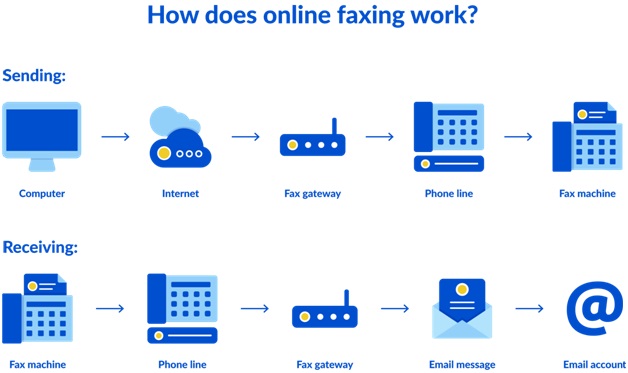Faxing API, or Application Programming Interface, stands as a technological marvel that facilitates seamless communication between software applications. This innovative technology empowers developers by granting them access to the functionalities of faxing services without the need to construct them from the ground up. In doing so, Faxing APIs present a secure and reliable means to integrate fax capabilities into any application, thereby enabling businesses to effortlessly send and receive documents with minimal effort. This article delves into the intricate details of Faxing APIs, exploring their definition, functionalities, benefits, workings, features, implementation guidelines, and security considerations.
Faxing API Defined
At its core, a faxing API represents a specialized application programming interface dedicated to the transmission of electronic documents via fax. Widespread in businesses and organizations, Faxing APIs play a pivotal role in streamlining document transmission processes. These APIs empower companies to swiftly send and receive substantial volumes of documents, eliminating the need for physical fax machines or labour-intensive manual processes.
The versatility of a typical faxing API extends to its integration capabilities with applications, websites, and various software solutions. This integration facilitates the automation of document transmissions, allowing organizations to program internal systems for the automatic dispatch of invoices or other documents through a secure connection. Such automation not only saves time and resources but ensures accuracy and security in document transmission.
Moreover, Faxing APIs offer tracking functionalities, enabling users to monitor various aspects of transmissions, including successful delivery confirmations, failed attempts, and status updates on pending transmissions. This level of oversight ensures that critical documents reach their destination without delays or errors, especially when dealing with sensitive information that requires encrypted transmissions for heightened security.
Benefits of Leveraging a Faxing API
In the contemporary digital landscape, where communication methods evolve rapidly, faxing remains a stalwart for reliability and security. Despite its decades-long existence, the integration of a Faxing API has modernized and simplified the process of sending and receiving faxes. This technology seamlessly integrates with existing systems, providing an online platform to handle document transmission securely. Notably, businesses can harness the power of Faxing APIs without the need for additional hardware or software investments, requiring only an internet connection and access to the API.
The security benefits of employing a Faxing API are noteworthy, especially when compared to alternative communication methods like email or text messaging. The encrypted transmission of faxed documents ensures that only authorized individuals can access them, safeguarding sensitive information during its journey through public networks.

How a Faxing API Functions
Faxing, a longstanding business practice, has undergone a transformative evolution with the advent of Faxing APIs. These APIs, a set of programming instructions, enable the integration of faxing capabilities into existing applications seamlessly. The process commences with registration with an online fax service provider offering the necessary APIs.
Upon registration, users gain access to a library of programming instructions and resources for crafting custom fax applications. These instructions guide the establishment of connections between the user’s application and the service provider’s system, ensuring secure data transfer over the internet through their servers.
Users can then upload documents from within their applications or compatible services like Dropbox or Google Drive. After uploading, users input necessary metadata, such as recipient details, before submitting the document for transmission via the Faxing API. The API converts the document into an image file format, digitally signing it before transmitting it securely.
Features and Capabilities of a Faxing API
Faxing technology, a stalwart in document transfer, has evolved with the integration of Faxing APIs into businesses’ existing applications. These APIs offer an interface connecting applications to fax servers via the internet, with compatibility across various programming languages. The advantages are multifold: automation of document processes, cost reduction related to paper-based document management, increased efficiency in sending multiple documents simultaneously, and simplified communication for those without traditional fax machines or telephone lines.
Security Considerations for Implementing a Faxing API
While faxing remains prevalent, the use of a Faxing API introduces security considerations crucial for organizations. Access to the API should be restricted to authorized personnel, necessitating robust authentication measures to prevent unauthorized access. Data transmitted through the Faxing API must employ strong encryption algorithms like AES-256 to thwart interception or tampering. The use of TLS/SSL encryption protocols further fortifies security against potential man-in-the-middle attacks.
Organizations utilizing Faxing APIs must adhere to regulatory compliance requirements such as HIPAA or GDPR when transmitting sensitive information. These measures ensure that data practices align with mandated standards for secure communication over electronic networks.
Conclusion
In conclusion, Faxing APIs emerged as indispensable tools for organizations requiring swift and secure document transmission over the Internet. Their ability to seamlessly integrate with existing applications and systems, coupled with their inherent security features, positions Faxing APIs as efficient solutions. By eliminating the need for additional hardware or software investments, these APIs provide a cost-effective and streamlined approach to document communication in today’s dynamic business landscape.
